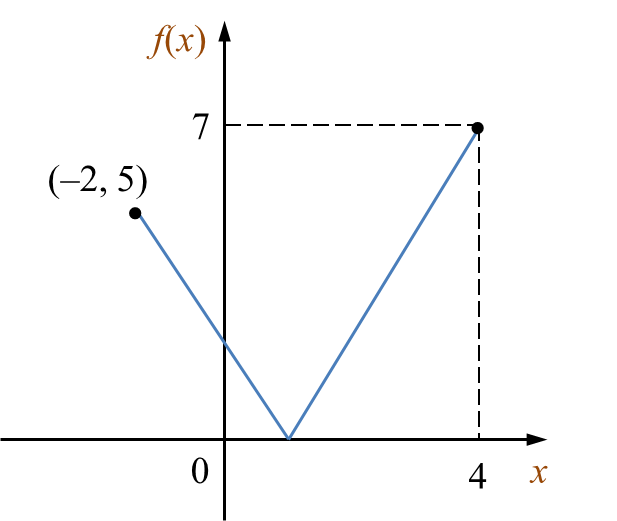Question 8 (3 marks):
It is given that the sum of the first n terms of an arithmetic progression is
Find the nth term.
Solution:
It is given that the sum of the first n terms of an arithmetic progression is
Find the nth term.
Solution:
Question 9 (3 marks):
Diagram 5 shows the graph of the function f : x → |1 – 2x| for the domain –2 ≤ x ≤ 4.
 Diagram 5
Diagram 5
State
(a) the object of 7,
(b) the image of 3,
(c) the domain of 0 ≤ f(x) ≤ 5.
Solution:
(a)
The object of 7 is 4.
(b)
f (x) = |1 – 2x|
f (3) = |1 – 2(3)|
= |1 – 6|
= |–5|
= 5
The image of 3 is 5.
(c)
|1 – 2x| = 5
1 – 2x = ±5
Given when f(x) = 5, x = –2.
When f(x) = –5
1 – 2x = –5
2x = 6
x = 3
Domain: –2 ≤ x ≤ 3.
Diagram 5 shows the graph of the function f : x → |1 – 2x| for the domain –2 ≤ x ≤ 4.
 Diagram 5
Diagram 5 State
(a) the object of 7,
(b) the image of 3,
(c) the domain of 0 ≤ f(x) ≤ 5.
Solution:
(a)
The object of 7 is 4.
(b)
f (x) = |1 – 2x|
f (3) = |1 – 2(3)|
= |1 – 6|
= |–5|
= 5
The image of 3 is 5.
(c)
|1 – 2x| = 5
1 – 2x = ±5
Given when f(x) = 5, x = –2.
When f(x) = –5
1 – 2x = –5
2x = 6
x = 3
Domain: –2 ≤ x ≤ 3.
Question 10 (4 marks):
Given the function g : x → 2x – 8, find
Solution:
(a)
(b)
Given the function g : x → 2x – 8, find
Solution:
(a)
(b)